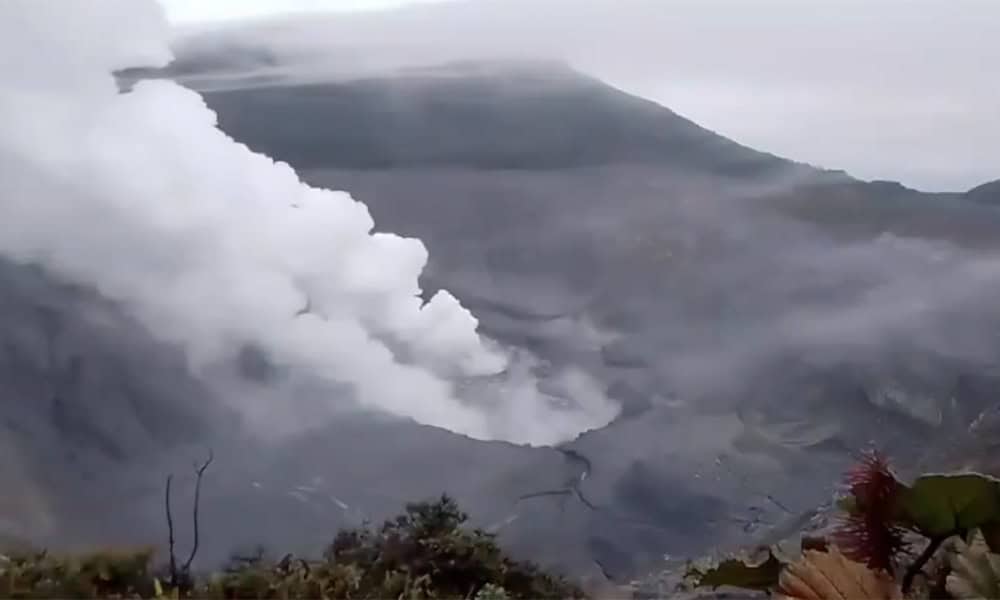Last night the Poás Volcano in Costa Rica erupted once again, sending a plume of ash and gas approximately 1,000 meters above its crater. The event was reported by the Volcanological and Seismological Observatory of Costa Rica (OVSICORI-UNA), which has been tracking the volcano’s activity closely. This eruption is the latest in a series of recent events, leading to heightened monitoring and safety measures by local authorities.
OVSICORI noted that the plume moved southwest due to wind patterns. Posts on X from other local sources like @notiscartago and @DiarioExtraCR mentioned the eruption’s visibility, with some users noting a glow from the crater earlier that day. The volcano had shown signs of unrest in the days prior, with smaller eruptions on March 27 and 28 reaching heights of 300 and 500 meters, respectively.
Volcanologist Geoffroy Avard, referenced in a report from us earlier this month, had pointed to increased seismic activity and gas emissions as indicators of potential escalation, which this event appears to confirm.
Situated 35 kilometers northwest of San José, Poás has been under scrutiny since late 2024 due to its rising activity. The Poás Volcano National Park was closed to visitors on March 28, following seismic activity and ash emissions that posed risks to safety. The U.S. Embassy in Costa Rica highlighted OVSICORI’s Orange Alert, the third of four alert levels, advising people to avoid the area. Residents in nearby towns, including Sarchí and Grecia, reported hearing low rumbling sounds during the eruption.
While no immediate damage or injuries were reported, the ashfall has raised concerns about air quality and its potential effects on local agriculture, such as coffee and dairy production in the Central Valley. The National Emergency Commission (CNE) is monitoring the situation and has prepared to assist communities if needed, including providing updates through official channels.
OVSICORI scientists indicate that Poás remains active, with ongoing seismic and gas measurements suggesting the possibility of further eruptions. The volcano has a history of significant activity, including a notable eruption in 2017 that affected nearby areas. A 3.5-kilometer exclusion zone around the crater remains in place, and officials are prepared to adjust safety measures based on new developments.
Monitoring continues, with Poás under close observation to assess its next moves. Local authorities are focused on keeping the public informed and ensuring safety in the region.






